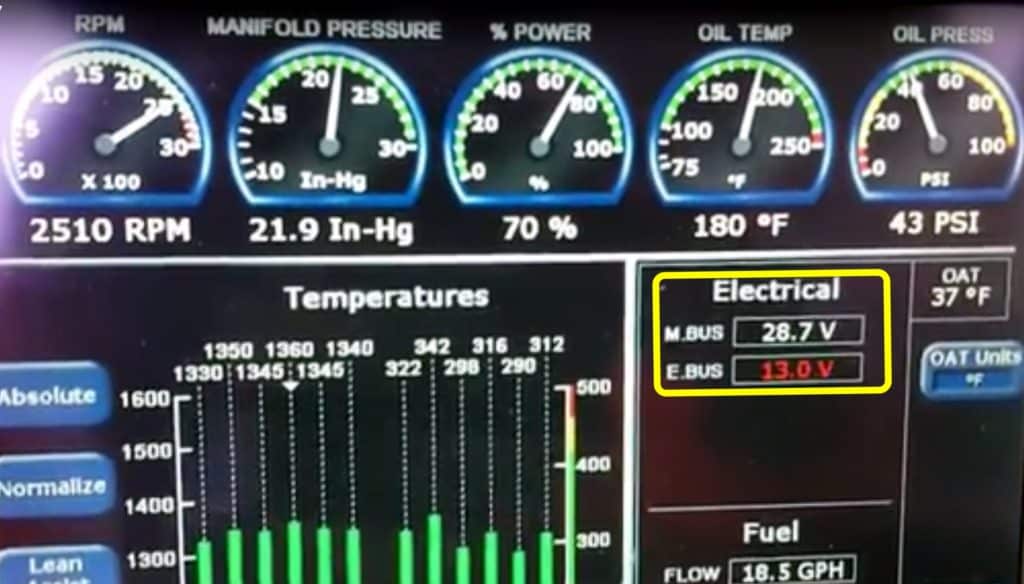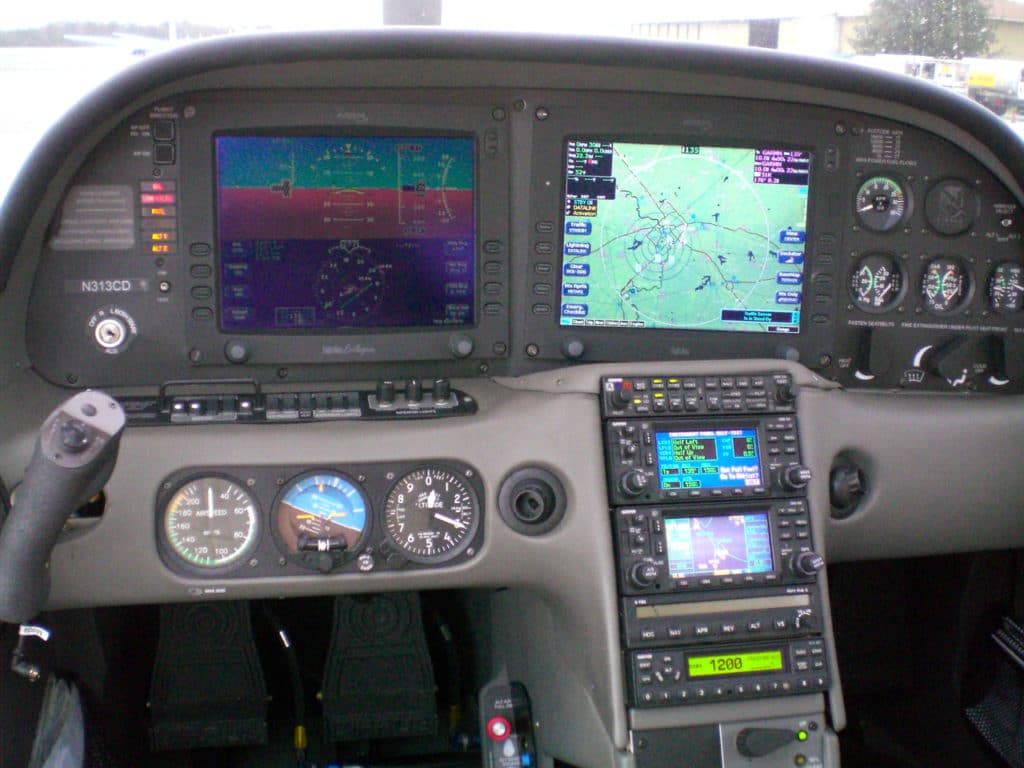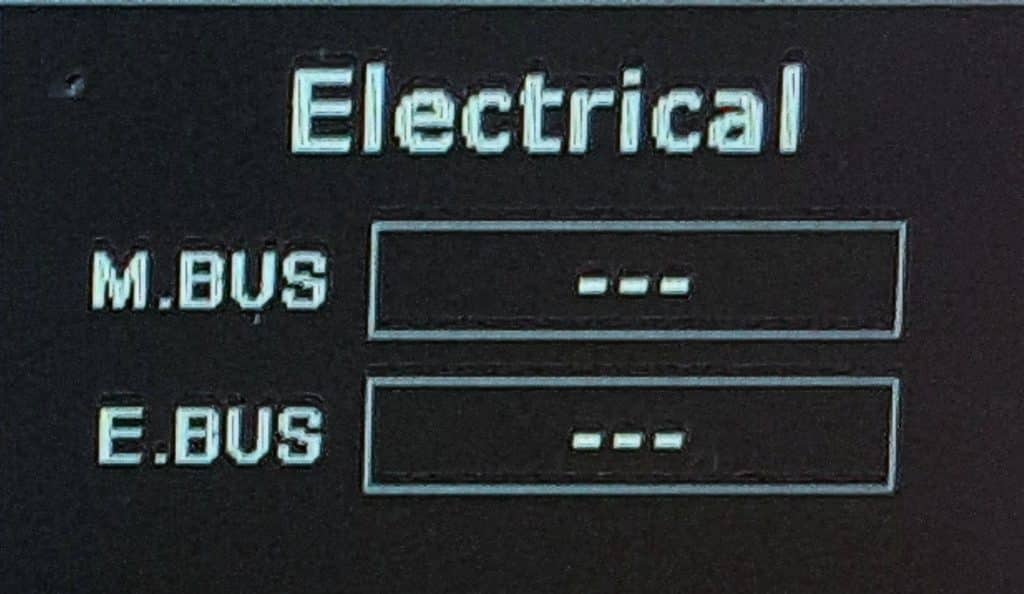When the pilot of a round-the-world flight found himself AOG in Iceland with electrical issues, remote diagnosis saved the day.

Ademilola “Lola” Odujinrin has a passion for aviation. He’s 37 years old, resides in Nigeria with his wife and two school-age children, and was first bitten by the flying bug at age 7 when his airline-pilot uncle invited him onto an airliner flight deck (back in the days when such visits weren’t prohibited). Lola earned his private pilot certificate at age 20. A decade later, he followed in his uncle’s footsteps to become a commercial pilot flying Boeing 737s.
Lola is also an overachieving athlete and adventurer, who in 2010 cycled 2,000 miles from Morocco to London in 17 days. So it was no big surprise when he announced his intention to become the first African to fly solo around the world. The aircraft Lola chose for this mission was N313CD, a 2004 Cirrus SR22 that would be “tanked” to hold enough fuel to provide endurance of 17+ hours, and equipped with survival gear, HF and sitcom radios, and a bunch of GoPro cameras.

Organizing and obtaining funds for this mission (dubbed “Project Transcend”) took ten years and was fraught with obstacles. The original plan was for the flight to originate from Lagos, Nigeria and proceed eastbound across Africa, India, Indonesia, Australia, Hawaii, the U.S. mainland, Canada, Iceland, Great Britain, Europe, and return to Lagos. However, cost constraints and operational considerations wound up dictating that the mission would instead originate and end in Washington, D.C.
Call for help

I first learned of Project Transcend over the Fourth of July weekend while I was attending the Flying Physicians Association national convention in Minneapolis. Lola contacted me on Saturday evening, asking for help. He told me he was on a round-the-world flight and made it as far as Reykjavik, Iceland, but had been stuck there for the past three days with an electrical problem that was eluding the mechanics there. We refer to situations like this as “AOG”—aircraft on ground.

About four hours into the seven-hour leg from Goose Bay, Labrador to Reykjavik, Lola noticed a flashing red warning on the Engine/Electrical page of the SR22’s Avidyne Multi-Function Display (MFD), indicating that the E-BUS voltage was 13.0 volts. “E-BUS” refers to the SR22’s “essential items bus” that powers the most critical instruments, avionics and equipment; it’s supposed to be 28+ volts. Lola switched off all non-essential electrical loads and landed safely at Reykjavik. The anomalous E-BUS voltage indication was reproducible on the ground.

The Cirrus SR22 is an all-electric airplane. Its solid-state air data/attitude/heading reference system (ADAHRS), backup gyros, navigation, communications and autopilot all depend on a properly functioning electrical system. So an electrical malfunction has to be treated as a no-go item, especially for a transoceanic flight.
The SR22 electrical system is redundant and complex, employing dual batteries, dual alternators, and seven busses, all controlled by a complex master control unit (MCU).
The local mechanics at Reykjavik—none of whom had any Cirrus-specific training or experience—performed basic functional checks on both batteries and both alternators and reported that they all seemed to be working properly. They could not account for the low E-BUS voltage alarm on the MFD, and suspected some sort of MCU problem.
A replacement MCU would cost $3,000, and based on what he was hearing from the mechanics Lola had no confidence that it would solve the problem. Besides, it was the Fourth of July weekend, so by the time a replacement MCU could be shipped to Iceland and installed in the aircraft, Lola would be stuck in Reykjavik for at least another week.
Diagnosing Lola’s problem
I phoned my colleague Jeff Iskierka (who lives in Minneapolis), explained Lola’s predicament that had him stuck in Reykjavik, and asked Jeff to assist. Jeff had been Director of Maintenance of a big Cirrus Service Center for ten years before I hired him as my Technical Director. He knows the SR22 electrical system like the back of his hand.
Jeff emailed Lola in Reykjavik to obtain the aircraft serial number, and pulled up the applicable electrical system schematics. Meantime, Lola emailed Jeff a GoPro video of exactly what he was seeing on his MFD display: an M-BUS (main bus) voltage indication of 28.7 volts, and a red E-BUS (emergency bus) voltage indication of 13.0 volts.
The M-BUS indication was normal; the E-BUS indication definitely wasn’t.
Jeff explained to Lola that the E-BUS voltage reading could not possibly be correct. In the SR22 electrical system, the big #1 alternator feeds the main bus and a small #2 alternator feeds the emergency bus. The emergency bus is also fed from the main bus through a silicon diode, so that if the #2 alternator fails the emergency bus will receive power from the #1 alternator through the diode. The voltage drop through the silicon diode is exactly 0.7 volts, so if the #2 alternator fails then the emergency bus will be 0.7 volts lower than the main bus. Since Lola’s M-BUS voltage was 28.7 volts, the E-BUS voltage could not drop below 28.0 volts.
Furthermore, if the E-BUS voltage really was 13.0 volts (as indicated on the MFD), none of the essential equipment powered from the emergency bus (attitude indicator, turn coordinator, PFD, com #1 and GPS #1) would be functioning. Yet Lola confirmed that those items all seemed to be working normally. Therefore, Jeff concluded, the essential bus voltage must be normal, and the MFD voltage indication must be bogus.
Jeff advised Lola that an MCU problem could not be responsible for this. Instead, the problem must be in a different black box altogether: the sensor interface unit (SIU). The SIU’s job is to receive analog signals from numerous sensors in the engine compartment (EGT, CHT, RPM, manifold pressure, fuel flow, oil pressure, oil temperature, and various electrical system voltages and currents) and convert them to digital information to be displayed by the MFD.
What’s the worst that could happen?
After arriving at a pretty firm diagnosis (a sick SIU), the dialog between Jeff and Lola started focusing on a treatment plan. There seemed to be two alternatives: Lola could spend another week in Reykjavik waiting for a replacement SIU to arrive and be installed by the local mechanics. Or he could fly his next leg from Iceland to Scotland with a known-bad SIU, disregard the bogus E-BUS voltage indication, and arrange to have the SIU replaced at a Cirrus Service Center in the UK.
Lola wisely asked Jeff the threshold question: “What’s the worst that could happen if I fly to Scotland with a failing SIU.” Worst case, Jeff replied, would be that the SIU might deteriorate further or even go completely inoperative, resulting in some or all of digital engine readouts on the MFD becoming erratic or changing to hyphens (“–”). However, the SR22 is equipped with backup analog “steam gauges” for the most critical engine parameters, and Jeff explained that those analog instruments wouldn’t be affected by an SIU failure and should still provide accurate information. In fact, Jeff told Lola, from an official FAA certification standpoint the SR22s steam gauges are considered primary and the MFD readouts considered backups (although no SR22 pilot thinks of them that way).
After processing all this information and sleeping on it overnight, Lola made a command decision to launch for Scotland on Monday morning, July 4th, satisfied that his electrical system was working properly and prepared for the possibility that his MFD readouts might not be trustworthy. On Monday evening, Jeff and I received the following email sent by Lola from his hotel room in Scotland:
“Dear Mike and Jeff, I could not go to bed without saying a massive thanks to both of you. Jeff said it all when I asked him what was the worst that could happen. He said I might lose all my digital readouts. That’s exactly what happened just 40 minutes into the four-hour leg from Iceland to Scotland. (Photo attached.) Knowing that this could happen, I was prepared for it, did not panic, and simply reverted to using the steam gauges as if I was flying my good old Cessna. I made it safety to Scotland, and I will have the SIU looked at when I get to London. Once again, I thank you. Best regards, Lola.”

Lola’s email was accompanied by a photo of his MFD Engine/Electrical page showing all the readouts replaced by hyphens.
Headwork, not handwork
Lola’s mission and location were unusual, but his predicament was not. Every year, my company deals with about 350 similar AOG-away-from-home situations—about one a day—and the rate is starting to pick up sharply as a result of our new Breakdown Assistance joint venture with Sporty’s. We’ve been handling such AOGs for more than eight years, and our experience is that such breakdowns can almost always be accurately diagnosed remotely without ever laying hands or eyeballs on the airplane or taking anything apart.
In roughly one-half of these AOG situations, we are able to conclude that the diagnosed problem doesn’t constitute a safety-of-flight issue, so the airplane may prudently be flown home or (as in Lola’s case) to another location where the necessary repairs can be accomplished conveniently, quickly and competently. It’s always preferable to continue the trip rather than getting stuck somewhere you don’t want to be.
The other half of the time, we conclude that safety concerns dictate that repairs be made before further flight. We then make arrangements with a local shop to perform the necessary work, and provide the local mechanics with detailed instructions as to what work we want done and what parts we want replaced. In such cases, we always strive to keep the maintenance done to a minimum, limited to what’s necessary to make the aircraft safe and legal to fly home. We do our best to defer any other work until pilot is safely home and the aircraft is in the trusted hands of its regular mechanic.
You bought a plane to fly it, not stress over maintenance.
At Savvy Aviation, we believe you shouldn’t have to navigate the complexities of aircraft maintenance alone. And you definitely shouldn’t be surprised when your shop’s invoice arrives.
Savvy Aviation isn’t a maintenance shop – we empower you with the knowledge and expert consultation you need to be in control of your own maintenance events – so your shop takes directives (not gives them). Whatever your maintenance needs, Savvy has a perfect plan for you: